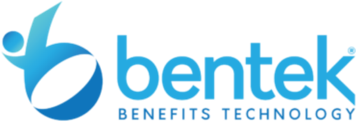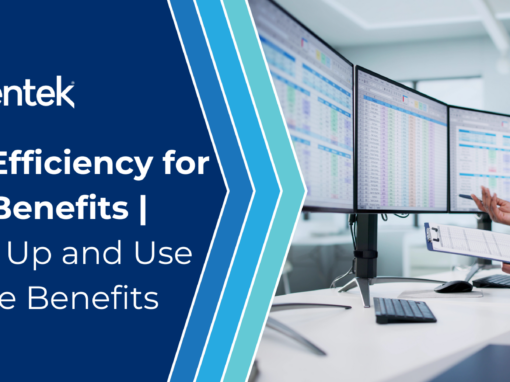In the intricate world of Human Resources (HR), mastering the art of benefits administration not only demands precision but a forward-thinking strategy. Did you know that a well-orchestrated benefits plan can significantly elevate organizational efficiency, ensure strict compliance, and skyrocket employee satisfaction? This critical component of HR strategy often underpins the success or failure of talent management initiatives. Enter the concept of benefits milestones—a systematic approach to navigating the HR labyrinth.
By establishing clear benefits milestones, organizations can guarantee that crucial deadlines never fall through the cracks, and HR processes flow as smoothly as possible. This article aims to illuminate the importance of crafting and executing definitive benefits milestones. Through actionable insights and best practices, we will guide you on how to refine your HR strategy, ensuring it not only meets but exceeds expectations.
Are you ready to transform your HR operations and set new benchmarks in benefits administration?
The Role of Benefits Milestones in Optimizing HR Strategy
The Essence of Benefits Milestones in HR Strategy
Benefits milestones serve as the backbone of an effective HR strategy, ensuring the smooth execution of benefits administration tasks. These milestones, when clearly defined and strategically implemented, act as checkpoints that guide HR teams through the complex terrain of employee benefits management. From the initiation of open enrollment periods to the adherence to ACA (Affordable Care Act) and HIPAA (Health Insurance Portability and Accountability Act) regulations, benefits milestones ensure that all critical deadlines are met, mitigating the risk of financial and legal consequences. Moreover, these milestones provide a structured framework that aids in:
- Streamlining Processes: Simplifying complex procedures into manageable tasks, thus enhancing operational efficiency.
- Enhancing Communication: Offering clear timelines and objectives that facilitate better coordination and understanding among departments.
- Improving Compliance: Ensuring timely adherence to federal and state regulations, thereby avoiding potential penalties and legal issues.
Benefits Milestones and Employee Engagement
The implementation of benefits milestones goes hand in hand with fostering a culture of engagement and participation among employees. By establishing clear, communicative strategies around benefits enrollment and administration, HR departments significantly increase the likelihood of active employee involvement in benefits programs. This engagement is critical for several reasons:
- Educated Decisions: Employees who understand their benefits are more likely to make informed choices that best suit their needs.
- Higher Satisfaction: Transparent communication and streamlined processes contribute to an overall positive employee experience with benefits administration.
- Increased Participation Rates: Clear deadlines and reminders help boost employee participation in benefits programs, ensuring they take full advantage of the offerings.
Organizational Efficiency Through Milestones
Beyond compliance and engagement, benefits milestones contribute significantly to the overall efficiency of an organization. They enable HR teams to allocate resources more effectively, reduce the administrative burden, and ensure that departments are better coordinated. Key aspects include:
- Optimized Resource Allocation: By planning out each step of the benefits administration process, HR can avoid the last-minute scramble and distribute tasks more evenly throughout the team.
- Reduced Administrative Burden: Milestones help in breaking down complex processes into smaller, more manageable tasks, thereby reducing the workload and stress on HR professionals.
- Enhanced Departmental Coordination: With clear milestones, there is less room for miscommunication, leading to smoother inter-departmental collaboration.
These outcomes underscore the critical role that benefits milestones play in not only optimizing HR strategy but in contributing to the broader organizational success. By adopting a milestone-driven approach, HR departments can ensure a more engaged workforce, maintain compliance with ease, and operate with greater efficiency.
How to Define and Implement Benefits Milestones
The creation and implementation of benefits milestones stand as a pivotal endeavor for HR professionals aiming to refine their strategy and enhance organizational performance. This section delves into a comprehensive guide designed to assist HR teams in establishing and executing an effective benefits milestones strategy.
Identifying Key Processes and Deadlines
The initial step in creating benefits milestones involves a meticulous identification of essential processes and their corresponding deadlines. This task necessitates:
- Conducting a Mapping Exercise: Begin by mapping out the entire benefits administration calendar, noting key events such as open enrollment periods, compliance reporting deadlines, and benefits renewal dates.
- Setting Priorities: Determine which processes are critical to your organization’s operational flow and employee satisfaction. Prioritize these to ensure they receive the attention and resources they need.
By aligning benefits administration activities with organizational timelines, HR can ensure a cohesive approach to managing employee benefits.
Breaking Down Milestones into Manageable Tasks
Transforming large milestones into smaller, more manageable tasks can demystify complex processes and foster a sense of progress and achievement among HR teams. This involves:
- Task Segmentation: Divide each milestone into its component tasks. For example, the open enrollment milestone may include tasks such as preparing communication materials, updating benefits software systems, and conducting employee information sessions.
- Assigning Ownership: Allocate each task to a specific team or team member, ensuring accountability and clarity in roles.
Leveraging Historical Data and Analytics
The use of historical data and analytics plays a crucial role in setting realistic and achievable milestones. HR professionals should:
- Analyze Past Performance: Review previous years’ benefits administration efforts to identify areas of improvement and successful strategies worth replicating.
- Set Data-Driven Goals: Utilize insights from data analysis to establish goals and timelines that are not only ambitious but also grounded in reality.
Enhancing Communication Plans
The symbiosis between milestones and communication plans cannot be overstated. Effective communication strategies are essential to engage employees and keep them informed throughout the benefits administration process. This includes:
- Regular Updates: Schedule and disseminate regular updates on the progress of benefits milestones to both the HR team and the wider employee base.
- Transparent Processes: Ensure that all communications are clear, concise, and transparent, providing employees with a clear understanding of what to expect and when.
Conducting Periodic Reviews of Milestones
To maintain the relevance and effectiveness of benefits milestones, HR teams should conduct periodic reviews. These reviews should:
- Assess Progress: Regularly evaluate the progress against each milestone, identifying any deviations from the plan early on.
- Adapt to Changes: Be prepared to adjust milestones in response to shifting organizational needs or changes in the regulatory landscape.
Implementing a structured approach to defining and executing benefits milestones enables HR professionals to navigate the complexities of benefits administration with greater ease and efficiency. By following the steps outlined above, HR teams can optimize their benefits strategy, ensuring timely administration, enhanced employee engagement, and compliance with regulatory requirements.
Conclusion: The Strategic Imperative of Benefits Milestones in HR
The integration of benefits milestones into the broader HR strategy encapsulates a vital approach toward augmenting organizational efficiency, ensuring rigorous compliance, and magnifying levels of employee engagement. This conclusive segment underscores the necessity of employing clear, well-structured benefits milestones as a navigational compass through the multifaceted terrain of benefits administration, thereby empowering HR professionals to contribute optimally to organizational triumph.
Enhancing Organizational Efficiency
- Streamlined Processes: By embedding benefits milestones within HR strategies, organizations can streamline benefits administration processes, thereby reducing the likelihood of bottlenecks and inefficiencies.
- Optimized Resource Allocation: Clear milestones allow for the precise allocation of resources, ensuring that HR teams are not overburdened and can focus on strategic tasks that propel the organization forward.
- Facilitated Inter-departmental Coordination: Benefits milestones foster enhanced coordination between HR and other departments, ensuring that benefits-related decisions and actions are in harmony with the organization’s overall objectives.
Ensuring Compliance
- Proactive Regulatory Adherence: Implementing milestones related to HR compliance ensures that organizations proactively meet legal obligations, such as those pertaining to the Affordable Care Act (ACA) and the Health Insurance Portability and Accountability Act (HIPAA), thus mitigating potential legal and financial repercussions.
- Regular Updates and Reviews: The dynamic nature of regulatory landscapes necessitates regular reviews and updates of benefits milestones, ensuring that organizations remain compliant despite changing laws and regulations.
Elevating Employee Engagement Levels
- Transparent Communication: Articulating clear benefits milestones and timelines enhances transparency, enabling employees to better understand and engage with their benefits, and fostering a sense of inclusivity and trust.
- Empowered Decision-Making: With clear milestones, employees are better equipped to make informed decisions regarding their benefits, leading to increased satisfaction and engagement with the offerings.
- Feedback Mechanisms: Incorporating feedback loops within the milestone planning process allows for continuous improvement of benefits offerings based on employee needs and preferences, further enhancing engagement.
Incorporating benefits milestones into HR strategies is not merely a task of administrative necessity but a strategic imperative that underpins organizational efficiency, compliance, and employee satisfaction. Through the meticulous planning and execution of benefits milestones, HR teams unlock the potential to navigate the complexities of benefits administration with precision, thereby delivering an exemplary performance that contributes to the overarching success of the organization. This strategic orientation towards benefits milestones reaffirms the role of HR as a critical driver of organizational excellence, underscoring the importance of a milestone-driven approach in optimizing benefits management.
For more articles like this, check out the Bentek Blog!




